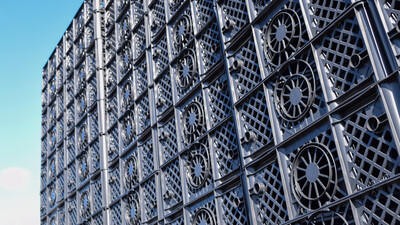Undeveloped land is often more able to cope with average rainfall, with the soil acting like an enormous sponge to absorb the water and gradually release it at a rate that watercourses such as streams and rivers can cope with. But the hard, non-porous surfaces of residential areas – roofs, driveways, patios, pavements and roads – prevent this from happening. This is resulting in larger volumes of stormwater than drainage systems can cope with, leading to flooding during peak rainfall.
To prevent or mitigate flooding, legislation is putting pressure on local planning authorities and developers to incorporate stormwater management systems that deal with peak volumes at their source rather than creating larger problems further downstream. Soakaways and attenuation systems are two options.
How Are Attenuation And Soakaway Systems Made?
Both systems work like temporary holding areas for large volumes of stormwater, buying time for the drainage system to cope with increased capacity during peak rainfall. Attenuation systems may use an aboveground or underground storage tank, or a more natural-looking construction such as an open pond. A soakaway is generally a large underground structure of plastic crates, wrapped in a permeable membrane.
What's The Difference Between Attenuation And Soakaways?
As the name suggests, a soakaway is designed to allow the collected water to gradually soak away through the surrounding soil over a given period, at a rate that will prevent the area from flooding or the soil from becoming waterlogged. As all stormwater passes through the soakaway chamber, this is what is called an online system.
Rather than releasing stormwater into the surrounding soil, attenuation stores it until the main stormwater pipework can cope with it. A hydro brake ensures it is released at a rate that won’t cause flooding or excess strain on the system.
An attenuation system can be designed to be online or offline. As with a soakaway, an online system handles all stormwater through the storage area before being pumped into the drainage system. An offline system is connected to the inlet pipe at a height above the normal dry weather water level of the system. This means it is only used in the event of a higher than usual rainfall.
The pros and cons
Soakaways
A soakaway is a good option for off-grid stormwater management as it requires no connection to a nearby stormwater drain.
However, problems can occur with soakaways if the ground is unsuitable. Heavy soils with a high clay content or a bed of clay lying shallow beneath the surface will prevent water from dispersing efficiently and may be unable to prevent eventual flooding in the event of prolonged precipitation.
Building regulations may also be a barrier to using a soakaway system in more densely developed areas, as these stipulate a soakaway must be sited at least five metres from the nearest building.
Attenuation
An attenuation system is the best option where local conditions don’t allow for a soakaway. It can also be a useful way of harvesting water for other uses such as gardening, car washing and toilet flushing. This reduces the cost of a metered water supply and creates a more sustainable water management system.
Where space permits, an open pond attenuation system can also double up as an attractive landscape feature.
But attenuation systems can also have their drawbacks. While compact aboveground tanks may reduce the footprint required for stormwater management, they can also be an obstruction or perceived as an eyesore.
This information is brought to you by Drainfast, one of the UK’s leading providers of specialist drainage supplies and related products. If you’re reading this article, it’s possible that you are looking at installing, upgrading or fixing a problem with a stormwater management system. If so, our experts are here to help you. Call us on 01420 555600 or email [email protected] for prompt, friendly advice and support.

Written by
Mark Chambers
Head of Marketing
As Head of Marketing, Mark plays an active role in running strategic projects to increase our brand profile.

